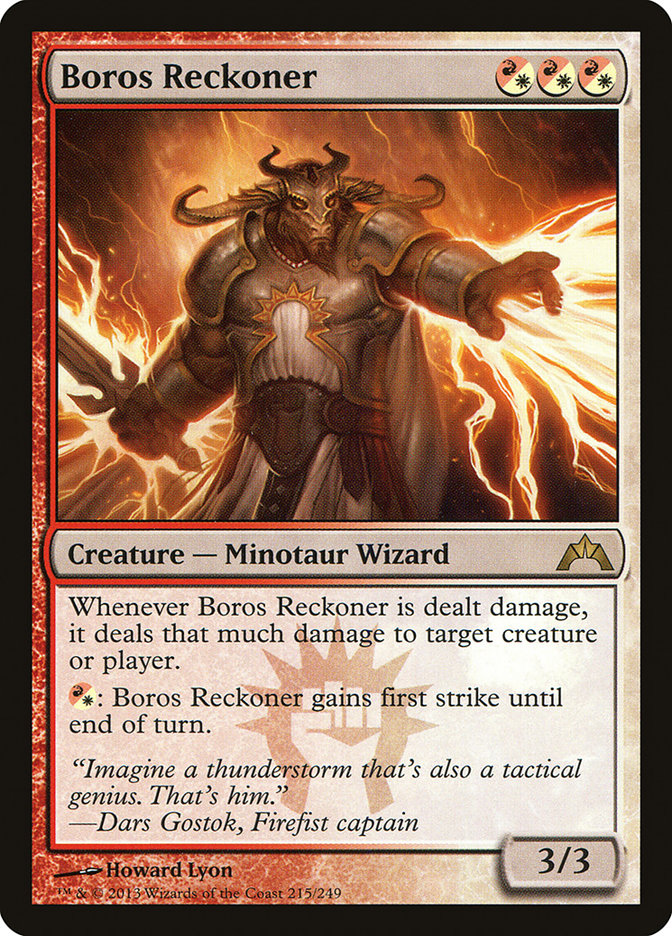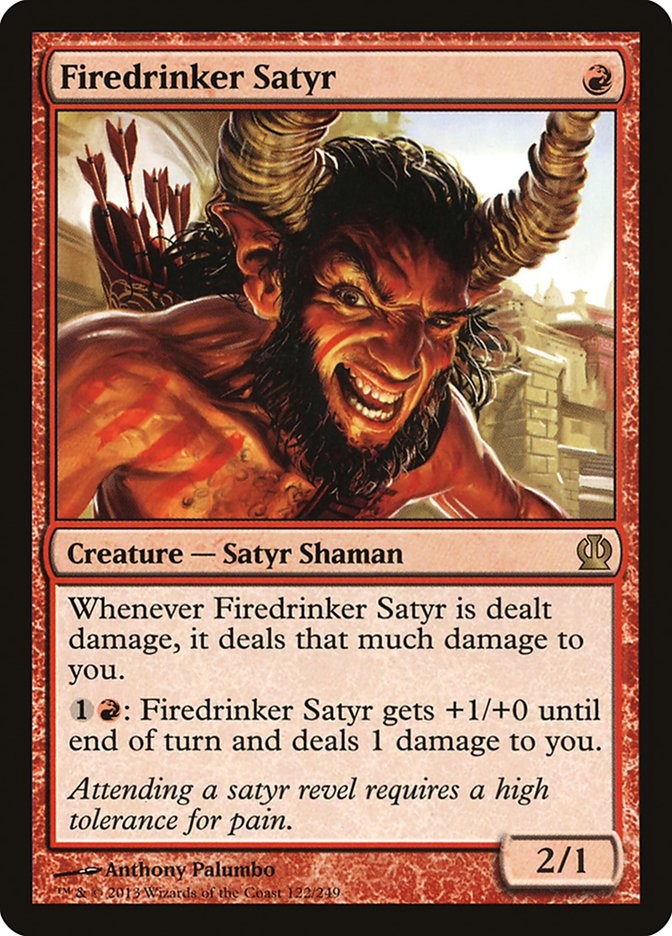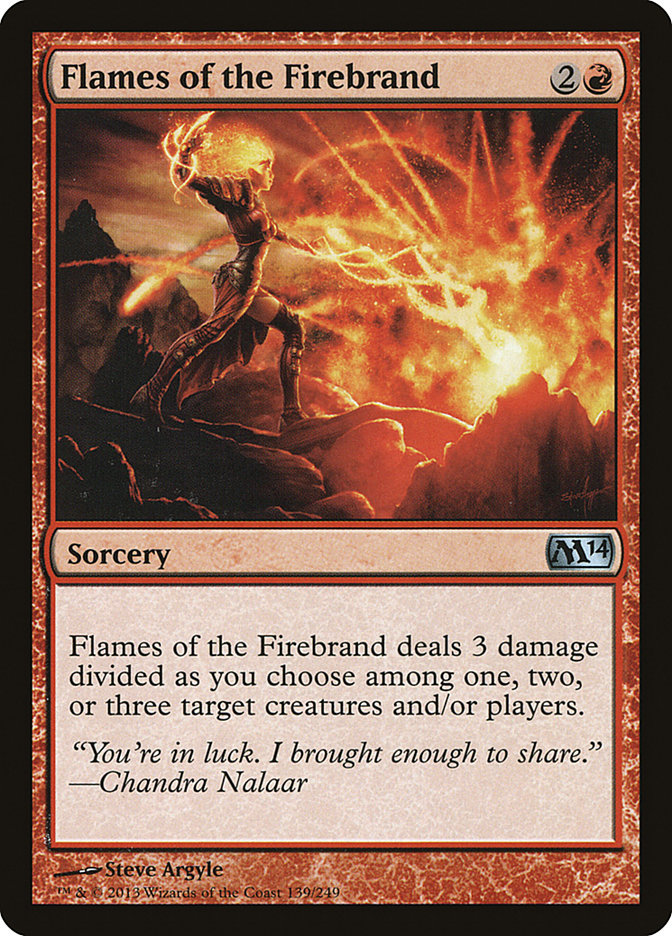Hello everyone, this is Philip Bertorelli from the Albany, NY region reporting on my recent success at the StarCityGames.com Standard Open in Worcester
I began playing Magic back in Unlimited in Oneonta, NY and first got into it through playing role-playing games with friends as a teenager. I’ve always looked at it as a good hobby to exercise my brain and balance my love of sports—namely basketball and snowboarding. Sports also likely play a role in why I can be very superstitious at times. I think what initially pulled me in were the creativity and social competition.
This recent event certainly encompassed both and in turn has emboldened my love of the game. As a rule of thumb, I typically only travel to larger tournaments that are within a three-hour drive from where I live near Albany, NY. But given this recent success, I may have to reevaluate this halfhearted approach. I’d also like to add that I likely lack some of the fundamental insights known to the more serious Magic players since I don’t read professional articles and evaluate Magic entirely from an analytical viewpoint. As such, I am currently best categorized as a weekend warrior.
With that said, I warn you that my perceived insights in the following article may be completely off base, so proceed at your own risk. This is also why the only professional players that I really know of and regard are those from much younger times, such as Jon Finkel and David Price. However, I’ve played Magic fairly consistently since its inception, with the only major gap beginning in Mercadian Masques when I sold my collection during college, only to be pulled back in by the undeniable allure of the original Ravnica set.
Speaking of flavor, the tournament last weekend was so chock full of it with the release of Theros that it was almost impossible to not get together with friends and prepare. Not to mention these StarCityGames.com Open Series events also bring out the best and brightest to get those competitive juices flowing. They are surely unique and exciting experiences each time. I’m just extremely grateful that I was able to edge out victories against much better and more accomplished players than I throughout the day.
On another note, despite how epic of a storyline it would have been if this were my first non-FNM tournament, I must confess all that praise belongs to Chris Posporelis. I must admit that there were times in which I was enamored by his success and was so happy for him because he’s such a quality dude. You can tell that he is just excited to be playing Magic, and it’s nearly impossible to not feel that excitement yourself around him. That is truly inspiring and refreshing, and it’s that kind of attitude that continually reinvigorates my passion for the game.
The match in which him and I played was honestly my favorite of the day because out of every other at the tournament, it was the only one that I would have been content having lost and in turn becoming a part of his impressive journey had it been my fate. I’m sure his next success is just around the corner. Chris, way to represent Albany Magic, along with Jared Boettcher, 518!
Creatures (29)
- 4 Chandra's Phoenix
- 4 Ash Zealot
- 1 Gore-House Chainwalker
- 4 Rakdos Cackler
- 4 Burning-Tree Emissary
- 4 Firefist Striker
- 4 Boros Reckoner
- 4 Fanatic of Mogis
Lands (21)
- 21 Mountain
Spells (10)

I only want to touch briefly on the deck and a couple of the interesting card choices that I made, especially since everyone already knows what was in my deck and why it’s good. Basically, the synergies are obvious. The first coming of the Minotaur, Boros Reckoner, I believe marked what was the tipping point for pre-Theros red decks. In my opinion, it got them most of the way there, but they still lacked the tenets of solid red decks past, which I believe include clear opportunities to gain card advantage and an ability to transition and sustain an offensive into at least the midgame portion of a game.
Now with the rise of the Fanatic, which is nothing short of fantastic, it made the deck an obvious choice for me. This opinion was further solidified when it was able to be coupled with card advantage engines such as Chandra, Pyromaster and Hammer of Purphoros and the opportunity to mount one last desperation offensive through scrying with Magma Jet.
What’s most interesting about this deck, though, was that I still doubted it despite everything I’ve mentioned thus far. My intention was simply to build what I believed would be the most powerful Mono-Red Aggro deck to playtest against. Then I spent the majority of my time designing my fresh new Gruul ramp deck with cards like Domri Rade; Xenagos, the Reveler; Polukranos, World Eater; and Kalonian Hydra, thinking that it would just be too much for opponents to deal with turn after turn. My friend Adam Richards and I began playtesting, the results were quite surprising. The red deck just continued to crush the Gruul deck game after game, narrowly losing only three out of twelve games despite rotating players.
The revelation that I came to is that the deck has an inherent evasiveness that makes it very difficult to pin down. Cards like Firefist Striker, Boros Reckoner, Chandra’s Phoenix, Fanatic of Mogis, and the ten burn spells pose serious problems in the matchup, and I felt that the same would hold true against other decks as well. The deck just has this nebulous nature that makes it very difficult to predict as well.
I still acutely recall how quickly my confidence was juxtaposed with humility when I was sitting at fourteen life with two Kalonian Hydras and a Polukranos in play and somehow still managed to fall prey to a Fanatic of Mogis parachuting in for nine and routing the ground troops to swarm in to dispatch me and any hopes of what I thought was a surefire win. With a card like the Fanatic of Mogis, your opponent must always be wary of your next play. I’m obviously fond of the Fanatic, and since it put on the best sales pitch itself on Sunday, I won’t belabor the topic any further.
I want to quickly address two additional questions that I’ve been getting lately about the deck because I think they stand out to those that quickly peruse the deck list. Several have inquired as to the use of only one Gore-House Chainwalker and the rationale behind it. To me, it was actually a pretty methodical choice since I thought it was the eighth-best creature available with only one creature slot remaining. It also seemed to gel with the system of the deck. It has teamwork with the Emissary and essentially does a somewhat decent imitation of a Flinthoof Boar. On to the second-most common topic:
"Please explain the sideboard choices, particularly what you were not fond of."
The answer there is Mizzium Mortars. I included four of it in the sideboard, and I consistently thought it was the weakest card that I decided to put in the deck. Throughout the day I felt like it was going to cost me. I was actually internally disappointed with myself just after submitting the decklist because of it for a number of reasons. First, before explaining why, let me lead by stating that it made it into every one of my Jund decks leading up to Theros, so I definitely find value in the card in the right deck.
Most importantly, though, is the resounding thought that it is too situational and tantamount to playing scared, which defies the entire premise of the deck’s flexibility and adaptability to mold around precarious situations. Put more simply, it’s a sorcery, which restricts your ability to taunt your opponents and may put you behind a turn when you need to drop a creature—when it’s critical to strike. Moreover, it isn’t a team player with Chandra’s Phoenix, and the Phoenix is a staple given its evasiveness and recursion. The obvious question from all this is:
"Well, then, what’s better?"
Without much thought and completely off the cuff, I think maybe four Firedrinker Satyrs should take Mizzium Mortars’ place in the sideboard. It would have certainly made the numerous U/W matchups that I faced much less difficult by enabling me to manipulate the pressure that I could apply at different points throughout the course of a game. The Firedrinker is not maindeck-worthy in my opinion, though, because in half of the matchups in which you face aggro decks he becomes a major liability. Another option may also be Flames of the Firebrand because it can yield high rewards in certain matchups despite it being sorcery speed.
My thoughts regarding the evolution of this deck given the possible reactionary measures that other decks may pose are still quite positive. I stand by this opinion even knowing that historically red decks have difficulty withstanding aging metagames. I think this deck has staying power (well, unless everyone decides to play G/W all of the sudden). From what I understand, some are saying that Essence Scatter may be a good response, but I think that the only way to effectively defeat a deck like this with a control deck is through additional sweepers, which are somewhat limited in the current metagame.
I guess U/W decks could transition to U/W/R to add Anger of the Gods, but that would further strain their mana bases and slow them down, which plays right into the red deck’s hands. It also makes Burning Earth more useful, making the red deck revel at the thought of having another matchup where a single card has the potential to cripple an opponent like it can in Esper matchups. In conclusion, I feel that Selesnya and Boros decks in order are my Mono-Red Aggro deck’s most feared opponents.
If you’re still with me, I want to take the rest of this article to serve a greater purpose to the Magic community. I want to pledge some more devotion to the deck and color that led me to victory by attempting to dispel a longstanding myth. I want to give skilled red mages the well-deserved praise that they truly deserve and play a role in debunking the label that goes along with piloting supposedly the easiest color in Magic. First, I want to preface my defense by emphasizing that this is just my opinion—take it or leave it. Furthermore, I only play on weekends and am far from considered worthy of a professional opinion, so those that disagree may certainly be more correct than I. However, since I have this opportunity, I’m going to make full use of it and defend those red mages out there even if my attempt is frail at best.
Playing a red deck can be as simple or as complicated as the pilot wants to make it, just like any other deck in Magic. A solid red mage will and should always approach a control matchup not by focusing on their own hand but instead with the intent to act as a puppeteer forcing the control player to play their cards in a particular order and fashion, picking up on subtle queues and the causal factors that encourage a control player to respond with a particular card or play. Deduction is one of the red mage’s most powerful tools, and even a minor miscalculation between when to bait and when to mount an all-out offensive is often the difference in the matchup. In essence, both players are in some ways playing the blue deck jointly.
If you think about it objectively, this is very similar to a blue mage, who also tries to coerce, but instead of doing so by applying pressure through various angles like a red deck does so by deceptive inaction at times. Each is equally complicated, searching for tells and hints through the ordering of spells and toying with decoys to get possible reads. Neither is more or less skill-intensive than the other from simply a color standpoint. Is it honestly more difficult to know when to counter a spell versus when and where to use direct damage?
These decisions each have subsequent ripple effects from that point forward that impact the course of a game, and each requires careful consideration. I would argue that both are very complicated in their own right when not cornered. To elaborate, in times of desperation, both decks become much more predictable as they’re clutching to avoid losing control of the matchup, and it’s at that point that the games are typically won or lost. I want to emphasize that these thoughts are in no way intended to knock particular colors or archetypes but are instead to shed a more positive light on perceived simple red decks. Obviously, this is not a complete blanket statement as well.
Some red decks truly are built to be simple, just as green or white decks may be as well, so this logic must be regarded in the appropriate context. But it’s just that—each deck must be viewed independently based on the cards and relationships that comprise them rather than holistically by the colors that comprise them. The message is simply to reinforce the fact that you can’t judge the difficulty of a deck simply by its color and that you must instead thoroughly investigate its contents before making a determination either way.
So what typically makes a deck more complicated than another if not the mana symbols? In my opinion, on the most granular level, the answer quite simply is how many decision points are generated from each card and each relationship among the cards within your deck on an individual and collective level. This is proportionate to the number of different choices each individual card elicits independently, the total number of synergies throughout a deck’s entire composition, and the possible interactions with opponents causing them to continually reevaluate their decision making processes since their decisions ultimately impact yours and vice versa.
These add not only intricacies that may be missed throughout the course of a game but also much more complex decision points that can lead to very different fates. Therefore, the more decision points that exist within a particular deck further add complexity, and each presents a potential pitfall or success for the pilot.
In conclusion, given the aforementioned statements, I am certainly not advocating that every red deck is complex but instead that the color of a deck does not dictate the level of skill required for a player to successfully pilot it. Anyone can pick up a red, blue, or black deck and pilot it incorrectly. My intent here is to create insight into looking more analytically at the contents of a particular deck before providing a judgment or label. To come full circle to the deck I built for last Sunday, I can tell you that it certainly is not a complex deck, but it’s also not a "level 0" deck if played correctly either.
Nonetheless, thank you everyone for such a quality experience last weekend and a friendly yet competitive environment.
Lastly, I would like to give a shout out to the late John T. Keane. You were successful in your profession, a linguist of seven languages, a Harvard graduate, and most importantly a standup role model and a supporter of the benefits that Magic provides to youths. What you may have lacked in playing Magic cards you more than made up for in your successes in making a difference in others’ lives. Personally, I know I’m a much better person for having met you. This is for you, buddy!




